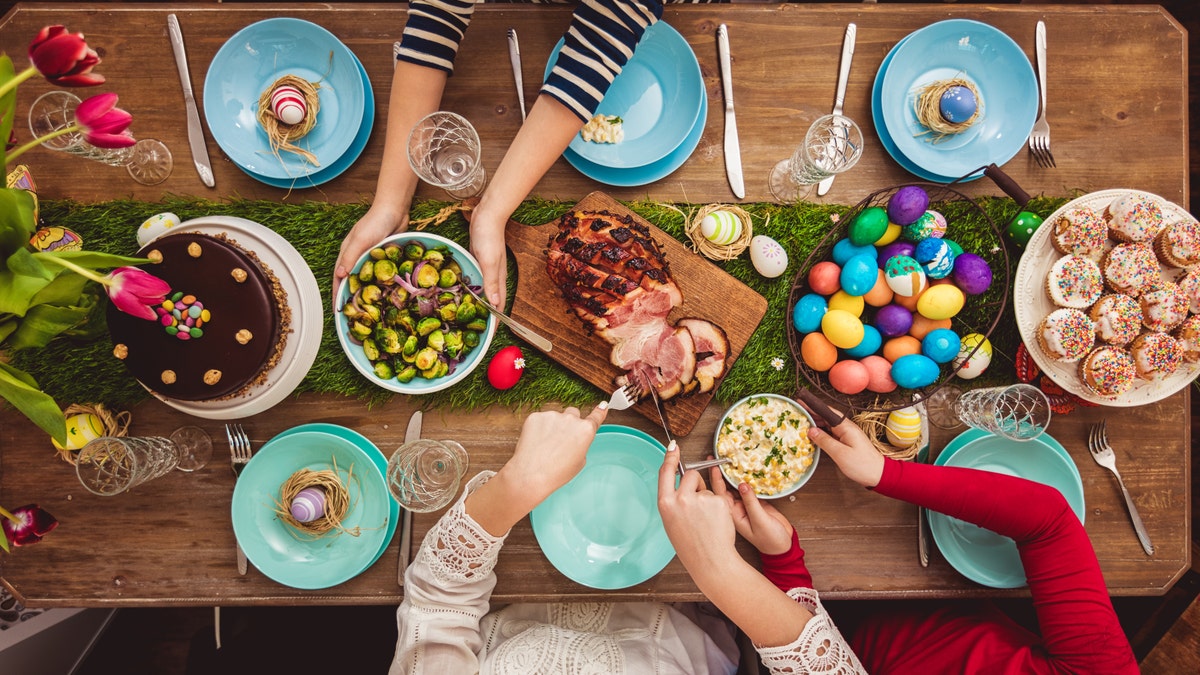Is it safe to have family over for Easter during the coronavirus pandemic?
With Easter coming up, many families are wondering whether it’s safe for them to celebrate the holy day with a few family members. But what could these celebrations mean for the progress our nation has made in areas that desperately need to see the number of COVID-19 cases go down? Dr. Daniel Griffin, an infectious disease specialist at Columbia University, fills us in.
Get all the latest news on coronavirus and more delivered daily to your inbox. Sign up here.
While churches have largely canceled their Easter Sunday celebrations or moved masses online due to the coronavirus pandemic, many are wondering if it is safe to gather with family members who have been quarantining in their own homes for the last two weeks.
Experts caution that the issue with this is the risk of letting your guard down too early and possibly causing another spike in cases or even a potential second wave.
EASTER MIND THE CORONAVIRUS CRISIS: ACTIVITIES AND RECIPES TO HELP MAKE THE MOST OF YOUR HOLIDAY
“I always worry about holidays, these events,” Dr. Daniel Griffin, an infectious disease specialist at Columbia University, told Fox News. “You know, birthday parties have been an issue, as we have seen when you get a large group of people together and it doesn’t have to be that large – a large group could be eight people – it could be your immediate family, plus now you’re getting together with grandma and granddaddy and you potentially have a lot of spreading that can occur in those settings.”
CORONAVIRUS UNKNOWNS IGNITE CONCERNS FOR PREGNANT WOMEN, NEWBORNS
Griffin cautioned that it’s difficult to control the spread in an indoor setting as well, especially if the house is unknowingly contaminated by someone who is asymptomatic or unaware of their illness. He also added that it’s difficult to social distance indoors.
“The social distancing doesn’t really work, if you say, ‘Oh, we’re going to have my older grandmother and grandfather come over so they can be with the kids, but we’re all going to sit six feet apart unless you can clean your entire home, you’re not really six feet apart from this contaminated environment,” he said. “So holidays are really tricky and they’re going to be really tough this year either because people social distance and how difficult it is not to be with all the people you love on the holidays or people won’t social distance and then we’re going to have a lot of loss of life because we’re going to push past an already maxed capacity.”
CORONAVIRUS MAY SPREAD THROUGH BREATHING, TALKING -- BUT WE DON'T KNOW HOW MUCH
Griffin said one of the trickiest parts about COVID-19, is how little is known about the novel virus, including whether the virus can re-infect or reactivate already-recovered patients.

Griffin also cautioned that it's difficult to socially distance while indoors, especially if the house is unknowingly contaminated. (iStock)
“A lot of the techniques to work with this coronavirus to be able to test is that really viable active virus that you’re detecting versus you’re just detecting the genetic remnants, dead virus, are difficult because this is a biosafety level 3 very serious pathogen, so most people don’t want to and shouldn’t be working with this in a normal lab,” he said. “You have to work with it under very high-level safety precautions that the workers, the researchers don’t end up getting sick. So when you hear these studies it’s hard to know are they just detecting remnant genetic material of the virus that’s dead or is this really a game-changer -- are they really shedding a viable infectious virus much longer than we initially thought?”
CLICK HERE FOR COMPLETE CORONAVIRUS COVERAGE
While he acknowledged that social distancing is becoming increasingly difficult as time goes on, especially as the weather starts getting warmer, Griffin warned that taking the “foot off the accelerator” while the virus is still circulating could open the door to a potential second wave.
“If the virus is still circulating at any level, you can basically restart the clock at that point,” he said.

